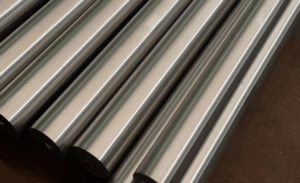In our daily lives, Incoloy 800 vs Incoloy 825 stand out as two highly versatile and durable alloys. Both are nickel-iron-chromium alloys, designed primarily for use in corrosive environments, but they differ significantly in their composition and applications. Let’s delve into the details of what makes these two alloys unique and how they differ from each other.

Incoloy 800 vs Incoloy 825 – What’s the Difference?
Incoloy 800 vs Incoloy 825 – 1. Composition:
The key difference between Incoloy 800 and Incoloy 825 lies in their composition. Incoloy 800 is primarily composed of nickel, iron, and chromium, with a smaller percentage of carbon and other elements like titanium, aluminum, and silicon added for strengthening and stabilizing purposes.
On the other hand, Incoloy 825 has a similar nickel-iron-chromium base but also includes molybdenum and copper in its composition. These additional elements enhance the alloy’s resistance to certain types of corrosion, particularly in acidic environments.
Incoloy 800 vs Incoloy 825 – 2. Corrosion Resistance:
Both alloys are highly resistant to corrosion, but Incoloy 825 offers superior resistance, especially in chloride-containing environments. This is due to the molybdenum and copper content, which improve the alloy’s ability to withstand pitting and crevice corrosion. Incoloy 800, while also corrosion-resistant, is not as effective in these specific conditions.
Incoloy 800 vs Incoloy 825 – 3. Applications:
The unique composition and corrosion resistance properties of these alloys make them suitable for a range of applications. Incoloy 800 is commonly used in high-temperature service applications, such as heaters, furnaces, and industrial boilers, where it maintains its mechanical properties and corrosion resistance even at elevated temperatures. Its strength and ductility also make it suitable for use in pressure vessels and piping systems.
On the other hand, Incoloy 825 is often chosen for use in marine and chemical processing environments, where exposure to chloride-containing solutions and acidic media is common. Its improved corrosion resistance in these conditions makes it a preferred material for components like heat exchangers, valves, pumps, and other equipment that require durability in harsh environments.
Incoloy 800 vs Incoloy 825 – 4. Fabrication and Weldability:
Both alloys can be easily fabricated and welded, but Incoloy 825 may require additional considerations due to its more complex composition. While standard welding techniques are generally applicable to both alloys, Incoloy 825 may require post-weld heat treatment to ensure optimal corrosion resistance and mechanical properties.
Incoloy 800 vs Incoloy 825 – 5. Cost:
Due to its superior corrosion resistance and more complex composition, Incoloy 825 typically costs more than Incoloy 800. However, the cost should be balanced against the specific requirements of the application and the longer-term durability benefits offered by Incoloy 825.
Why Choose Huaxiao Alloy?
In summary, Incoloy 800 vs Incoloy 825 are both excellent alloys with unique strengths and applications. Incoloy 800 excels in high-temperature applications, while Incoloy 825 offers superior corrosion resistance, particularly in chloride-containing environments. The choice between the two depends on the specific requirements of the intended use, with both alloys delivering reliable performance in their respective domains.
Thank you for reading our article and we hope it can help you to have a better understanding of the differences between Incoloy 800 vs Incoloy 825. If you are looking for Incoloy 800 & Incoloy 825 suppliers online now, please don’t hesitate to contact Huaxiao Alloy.
As a leading supplier of Incoloy Alloys from Shanghai, China, Huaxiao Alloy provides customers with high-quality Incoloy Alloy 925, Incoloy Alloy 800, Incoloy Alloy 825, Inconel 602 alloy, Hastelloy S Alloy, Inconel Alloy 600, Inconel Alloy 601, Inconel 625 UNS N06625, Hastelloy B3 (UNS N10675), Hastelloy D205, and Hastelloy G30 (UNS N06030) at a very competitive price.



